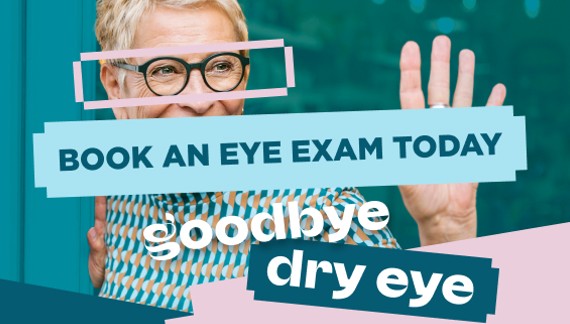Trinavarat A., A. L. (2012). Treatment of epidemic keratoconjunctivitis with 2% povidone-iodine: a pilot study. Journal of Ocular Pharmacology and Therapeutics, 28(1), 53–58. https://doi.org/10.1089/jop.2011.0082
Wutzler P., S. A., Klöcking R., B. J., Schacke M., T. R., & Fleischer W., R. K. (2000). Virucidal and chlamydicidal activities of eye drops with povidone-iodine liposome complex. Ophthalmic Research, 32, 118–125. https://doi.org/DOI:10.1159/000055600
Monnerat N., B. W., & Thiel M.A. (2006). Povidone-Iodine for Treatment of Adenoviral Conjunctivitis: An in vitro Study. Klinische Monatsblätter für Augenheilkunde, 223(5), 349–352. https://doi.org/10.1055/s-2006-926633
Kawana R, K. T., Nakagomi O, M. I., & et al. (1997). Inactivation of human viruses by povidone-iodine in comparison with other antiseptics. Dermatology, 195 supp 2, 29–35.
French AN, M. I., Burlutsky G, M. P., & Rosa KA. (2013). Prevalence and 5- to 6-year incidence and progression of myopia and hyperopia in Australian schoolchildren. Ophthalmology, 120(7), 1482–1491. https://doi.org/10.1016/j.ophtha.2012.12.018
Portello JK., R. M., & Chu CA. (n.d.). Blink rate, incomplete blinks and computer vision syndrome. Optometry and Vision Science, 90(5), 482–487. https://doi.org/10.1097/OPX.0b013e31828f09a7
Bhargava R., K. P., Phogat H., K. A., & Kumar M. (2015). Oral omega-3 fatty acids treatment in computer vision syndrome related dry eye. Contact Lens and Anterior Eye, 38(3), 206–210. https://doi.org/10.1016/j.clae.2015.01.007
Kangari H, E. M., Sardari S, K. H., Eftekhari MH, Sardari S, Hashemi H, Salamzadeh J, Ghassemi-Broumand M, Khabazkhoob M., Hashemi H, S. J., & Ghassemi-Broumand M, K. M. (2013). Short-term consumption of oral omega-3 and dry eye syndrome. Opthalmology, 120(11), 2191–2196. https://doi.org/10.1016/j.ophtha.2013.04.006 Download
Bhargava R, K. P., Kumar M, M. N., & Mishra A. (2013). A randomized controlled trial of omega-3 fatty acids in dry eye syndrome. International Journal of Ophthalmology, 6(6), 811–816. https://doi.org/10.3980/j.issn.2222-3959.2013.06.13 Download
ller TA, L. M., & Wildsoet CF. (2016). Myopia Control with Bifocal Contact Lenses: A Randomized Clinical Trial. Optometry and Vision Science: Official Publication of the American Academy of Optometry 90(9) · July 2013, 93(4), 344–352. https://doi.org/10.1097/OPX.0000000000000808
Walline JJ, G. K., & McVey ME, J.-J. L. (2013). Multifocal contact lens myopia control. Optometry and Vision Science: Official Publication of the American Academy of Optometry 90(9) · July 2013, 90(11), 1207–1214. https://doi.org/10.1097/OPX.0000000000000036
Sun Y, X. F., Zhang T, L. M., Wang D, C. Y., & Liu Q. (2015). Orthokeratology to control myopia progression: a meta-analysis. PLoS One, 10(4). https://doi.org/10.1371/journal.pone.0124535 Download
Cheng D, S. K., & Woo GC, D. B. (2014). Effect of Bifocal and Prismatic Bifocal Spectacles on Myopia Progression in ChildrenThree-Year Results of a Randomized Clinical Trial. JAMA Ophthalmology, 132(3), 258–264. https://doi.org/10.1001/jamaophthalmol.2013.7623
2007 Report of the International Dry Eye
WorkShop (DEWS). (2007). The Ocular Surface, 5(2), 75–92. Download
Bullimore MA, S. L., & Jordan L. (2013). The Risk of Microbial Keratitis with Overnight Corneal Reshaping Lenses. Optometry and Vision Science: Official Publication of the American Academy of Optometry 90(9) · July 2013, 90(9), 937–944. https://doi.org/10.1097/OPX.0b013e31829cac92 Download
Davis RL, E. S., Bennett ES, K. B., & Wohl L. (2015). Stabilizing Myopia by Accelerated Reshaping Technique (SMART)-study Three Year Outcomes and Overview. Advances in Ophthalmolgy & Visual Systems, 2(3). https://doi.org/10.15406/aovs.2015.02.00046 Download
Cho P, C. S., & Edwards M. (2005). Longitudinal Orthokeratology Research in Children. Current Eye Research, 30(1), 71–80. https://doi.org/10.1080/02713680590907256
Walline JJ, J. L., & Sinnott LT. (2009). Corneal Reshaping and Yearly Observation of Nearsightness. British Journal of Ophthalmology, 93(9), 1181–1185. https://doi.org/10.1136/bjo.2008.151365
Tetsuhiko K, T. H., & Tetsuro O. (2011). Influence of Overnight Orthokeratology on Axial Elongation of Childhood Myopia. Investigative Ophthalmology and Visual Science, 52(5), 2170–2174. https://doi.org/10.1167/iovs.10-5485
McCarty CA, B. A., Livingston PMYL, Taylor HR, S. Y., & Taylor HR. (1998). The epidemiology of dry eye in Melbourne, Australia. Ophthalmology, 105(6), 1114–1119. https://doi.org/10.1016/S0161-6420(98)96016-X
Gifford K. (2016, June 27). Myopia Control with Contact Lenses in Practice. Mivision, (113).
Downie L, L. R. (2013). Corneal Reshaping Influences Myopic Prescription Stability (CRIMPS): An Analysis of the Effect of Orthokeratology on Childhood Myopic Refractive Stability. Eye & Contact Lens: Science & Clinical Practice:, 39(4), 303–310. https://doi.org/10.1097/ICL.0b013e318298ee76
Chia A, L. Q., & Tan D. (2016). Five-Year Clinical Trial on Atropine for the Treatment of Myopia 2: Myopia Control with Atropine 0.01% Eyedrops. Ophthalmology, 123(2), 391–399. https://doi.org/10.1016/j.ophtha.2015.07.004. Download
Yang Z, L. W., Ge J, L. W., Chen X, C. L., & Yu M. (2009). The effectiveness of progressive addition lenses on the progression of myopia in Chinese children. Ophthalmic and Physiological Optics, 29, 41–48. https://doi.org/10.1111/j.1475-1313.2008.00608.x Download
Sankaridurg P, D. L., Varnas S, H. A., Chen X, M. A., Fisher S, L. Z., Smith EL 3rd, G. J., & Holden B. (2010). Spectacle lenses designed to reduce progression of myopia: 12-month results. Optometry and Vision Science: Official Publication of the American Academy of Optometry, 87(10), 631–641. https://doi.org/10.1097/OPX.0b013e3181ea19c7 Download
Mutti DO, S. R., & Friedman NE, Z. K. (2000). Peripheral Refraction and Ocular Shape in Children. Investigative Ophthalmology & Visual Science, 4(5), 1022–1030. Download
Hoogerheide J, R. F., & Hoogenboom WP. (1971). Acquired myopia in young pilots. Ophthalmologica, 163(4), 209–215.
Rose KA, M. I., Ip J, K. A., Huynh S, S. W., & Mitchell P. (2008). Outdoor Activity Reduces the Prevalence of Myopia in Children. Ophthalmology, 115(8), 1279–1285. https://doi.org/10.1016/j.ophtha.2007.12.019
Flitcroft DI. (2012). The complex interactions of retinal, optical and environmental factors in myopia aetiology. Progress in Retinal and Eye Research, 31(6), 622–660. https://doi.org/10.1016/j.preteyeres.2012.06.004
Donovan L, S. P., Ho A, N. T., & Smith ELI, H. B. (2012). Myopia progression rates in urban children wearing single-vision spectacles. Optometry and Vision Science: Official Publication of the American Academy of Optometry 90(9) · July 2013, 89(1), 27–32. https://doi.org/10.1097/OPX.0b013e3182357f79 Download
Jung SK, L. J., & Kakizaki H, J. D. (2012). Prevalence of myopia and its association with body stature and educational level in 19-year-old male conscripts in seoul, South Korea. Investigative Ophthalmology & Visual Science August 2012, 53(9), 5579–5583. https://doi.org/10.1167/iovs.12-10106 Download
Lin LLK, S. Y., & Hsiao CK, C. C. (n.d.). Prevalence of myopia in Taiwanese schoolchildren: 1983 to 2000. Download








